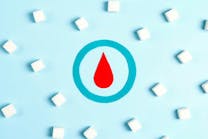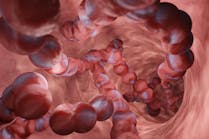HITECH, EHR, EMR, ONC-ATCB, MU, HL7…they are acronyms we have heard very often in recent years. But we might not all be on the same page as to their meaning. What do they mean? How will they affect your Anatomic Pathology lab? How will they affect your lab’s clients?
What is the HITECH Act?
Congress passed the Health Information Technology for Economic and Clinical Health Act, commonly referred to as the HITECH Act, as part of the American Recovery and Reinvestment Act of 2009. The passage of this act arguably has impacted labs more than any other single legislative endeavor in the last decade, and it was the primary stimulus in moving the United States toward creating a nationwide network of Electronic Health Records (EHR).
What is an EHR?
An Electronic Health Record (EHR) enables patients to have access to their Electronic Medical Record (EMR). It affords patients the ability to provide input into, and view, all of their medical records—regardless of which healthcare provider enters information. This means that all of a patient’s medical information—including office visits, prescriptions, radiologic interpretations, and laboratory test results—is in a single place. The EHR can only exist if the patient’s healthcare professionals have an EMR that can support the exchange of information with the EHR.
What is an EMR?
The Electronic Medical Record (EMR) is an electronic folder used by the patient’s primary care physician, specialists, and other healthcare providers to keep track of all details relating to that patient’s medical care. This record includes information generated in both the doctor’s office and hospital settings. The EMR is an electronic record of the patient’s medical history.
What is the ONC-ATCB?
ONC-ATCB is an acronym for the Office of the National Coordinator-Authorized Testing and Certification Bodies, part of the U.S. Department of Health and Human Services. ONC-ATCB is the primary government authority tasked with certifying that EHRs in use by healthcare professionals, as well as vendor-provided software, meet certain predefined “Meaningful Use” (MU) criteria.
What does Meaningful Use (MU) mean?
Provisions of the HITECH Act provide an incentive for clinicians and other healthcare providers to demonstrate to the ONC-ATCB that they use their EHR “meaningfully.” The goal is not simply adoption, but true Meaningful Use of EHRs—use that results in significant improvements in care. To view it another way, incentivized providers need to show they’re using certified EHR technology in ways that can be significantly measured in both quality and quantity of care. The Meaningful Use of EHRs is intended to:
- Improve coordination of patient care
- Reduce disparities in healthcare
- Involve patients and their families
- Improve public health
- Guarantee adequate privacy and security.
What is an HL7 Interface?
HL7 is an acronym for Health Level Seven. HL7 is a standardization of software code written by vendors serving the medical community. An HL7 interface enables the exchange of information between medical software applications in an individual department, such as the lab, and an EMR.
How will this impact your lab?
In short, this means that all lab data must find its way from an EMR into the EHR, irrespective of the department in the healthcare continuum in which the data was generated. Currently, it is estimated that over 70% of patient information in an EHR is comprised of laboratory data. While the majority of the lab data lies outside of the Anatomic Pathology department, no distinction is made by the Centers for Medicare and Medicaid Services (CMS) in segmentation of data from individual departments within the lab. Thus, data from the Anatomic Pathology lab must be contained in the patient’s EHR if the healthcare provider is approved as meeting the criteria of Meaningful Use.
Even though stand-alone Anatomic Pathology Laboratory Information Systems (LIS) are exempt for EMR Certification, many referring physicians supported by the AP Lab will be applying for these incentives. These lab clients (referring physicians and other healthcare providers) are incentivized to meet the criteria established for the meaningful use of the EMR/EHR. In the foreseeable future, as per HITECH, healthcare providers will be penalized if they do not utilize an EMR that meets Meaningful Use criteria and integrates with the EHR.
As a result, Healthcare providers will be aligning with ONC-ATCB certified vendors, using an EHR System or Module. Some AP Labs have already deployed transmission of patient results to a healthcare provider’s EMR, most commonly through an HL7 Interface. This interface offers one of the more costly forms of transmitting data as the lab is charged twice—first as the AP LIS vendor completes the work to connect to the EMR, and again as the EMR vendor performs necessary work to connect to the AP LIS.
What are the alternatives?
You have several options available to give your clinicians and other healthcare providers the ability to easily insert information from your AP lab into their EMRs. The optimal solution depends on whether your lab is hospital-based, an in-house specialty lab, or a local, regional or national reference lab. If you have recently installed or upgraded your AP LIS, a call to your LIS vendor will help you understand how they may best help. If you have not upgraded your AP LIS within the past few years, or if you are considering installing a new AP LIS, you should research which system will best meet your needs with regard to fulfilling obligations to have your AP lab-generated data seamlessly interface with your clients’ EMRs. If you have an enterprise-wide hospital system, do not limit your inquiries to a single vendor; consider augmenting your system with a Best-of-Breed solution.
While many things in the lab are evolving, there are two things of which you can be certain: the healthcare marketplace will continue to use acronyms; and eventually all healthcare providers will need to use the EHR approach.





